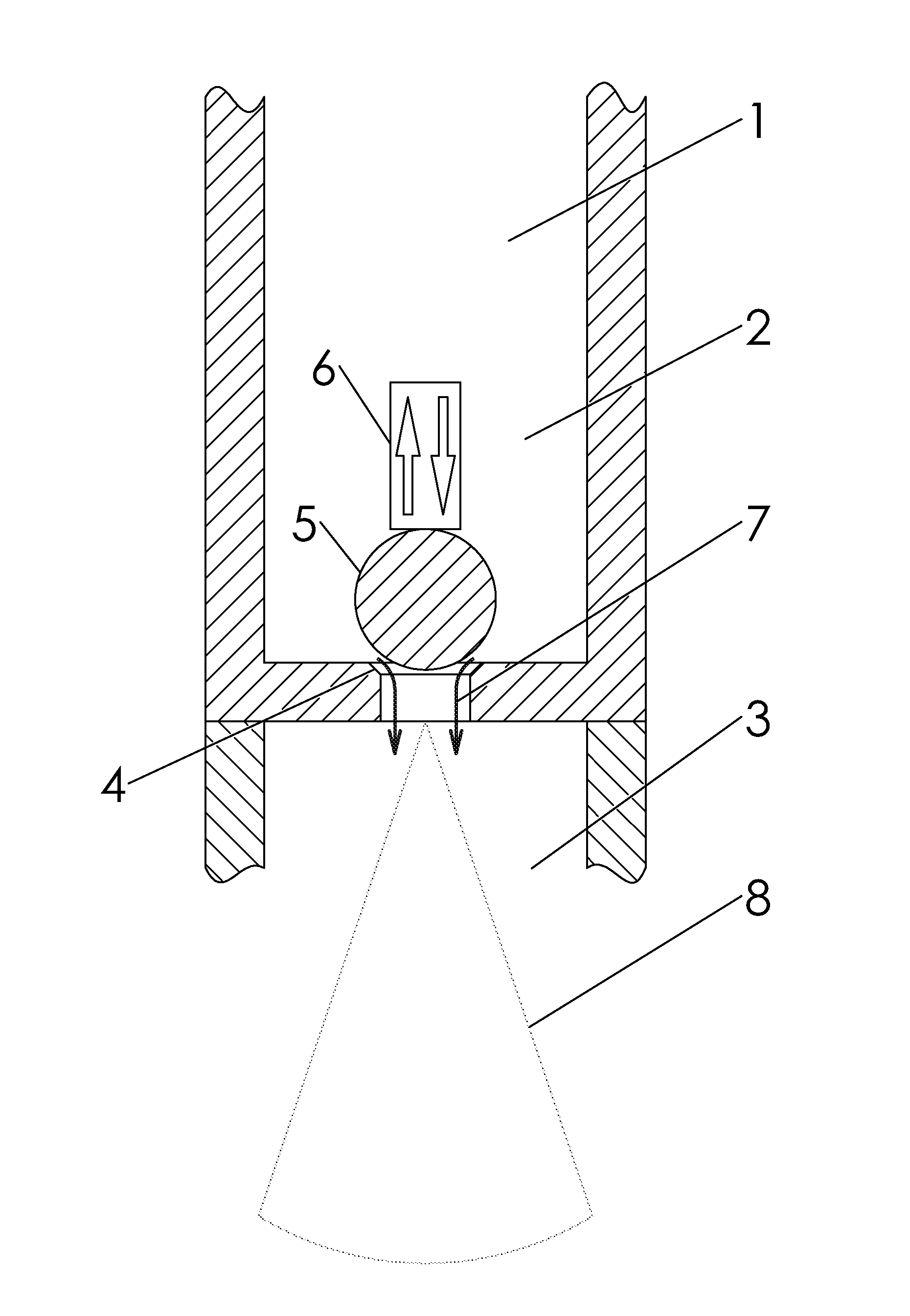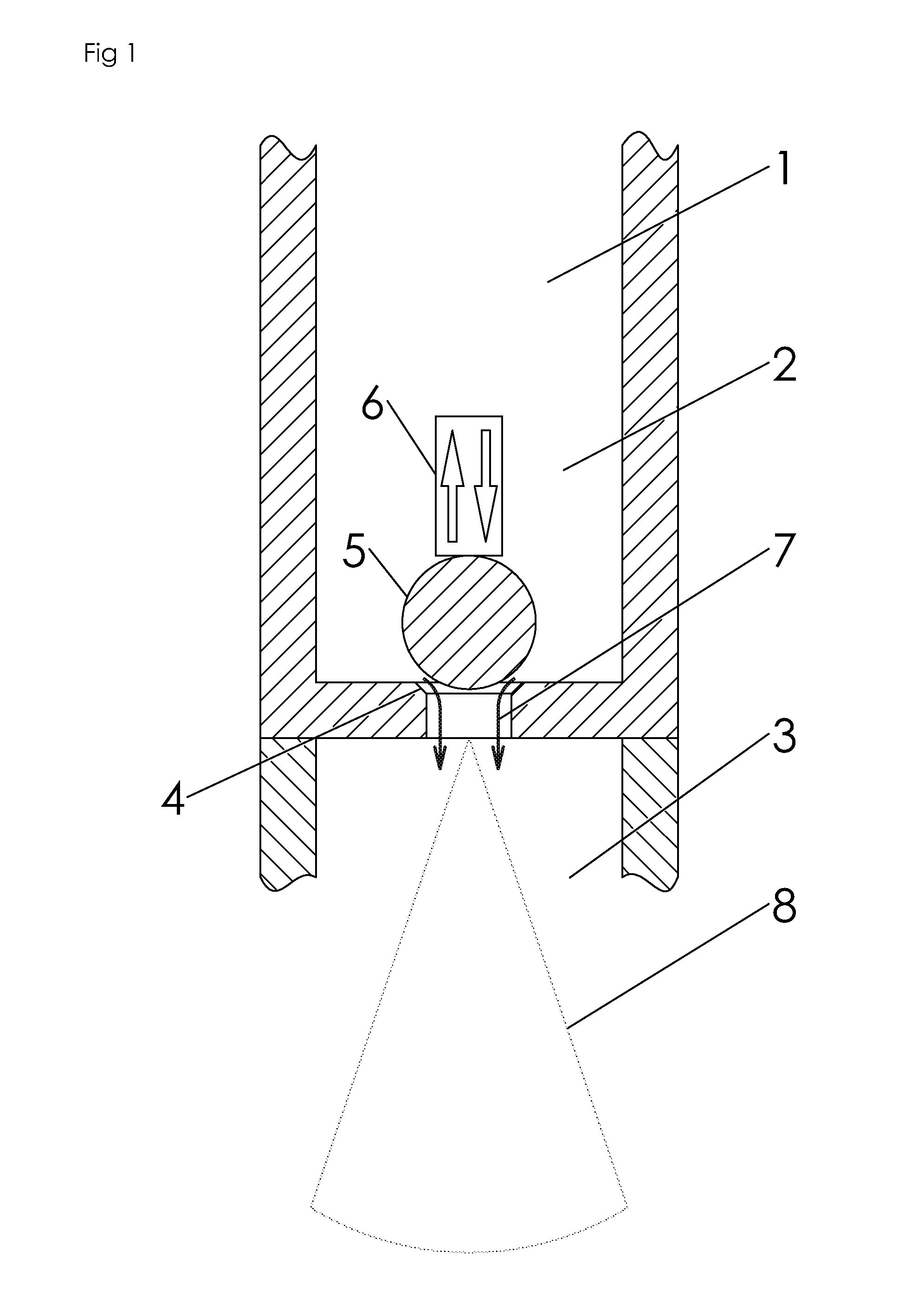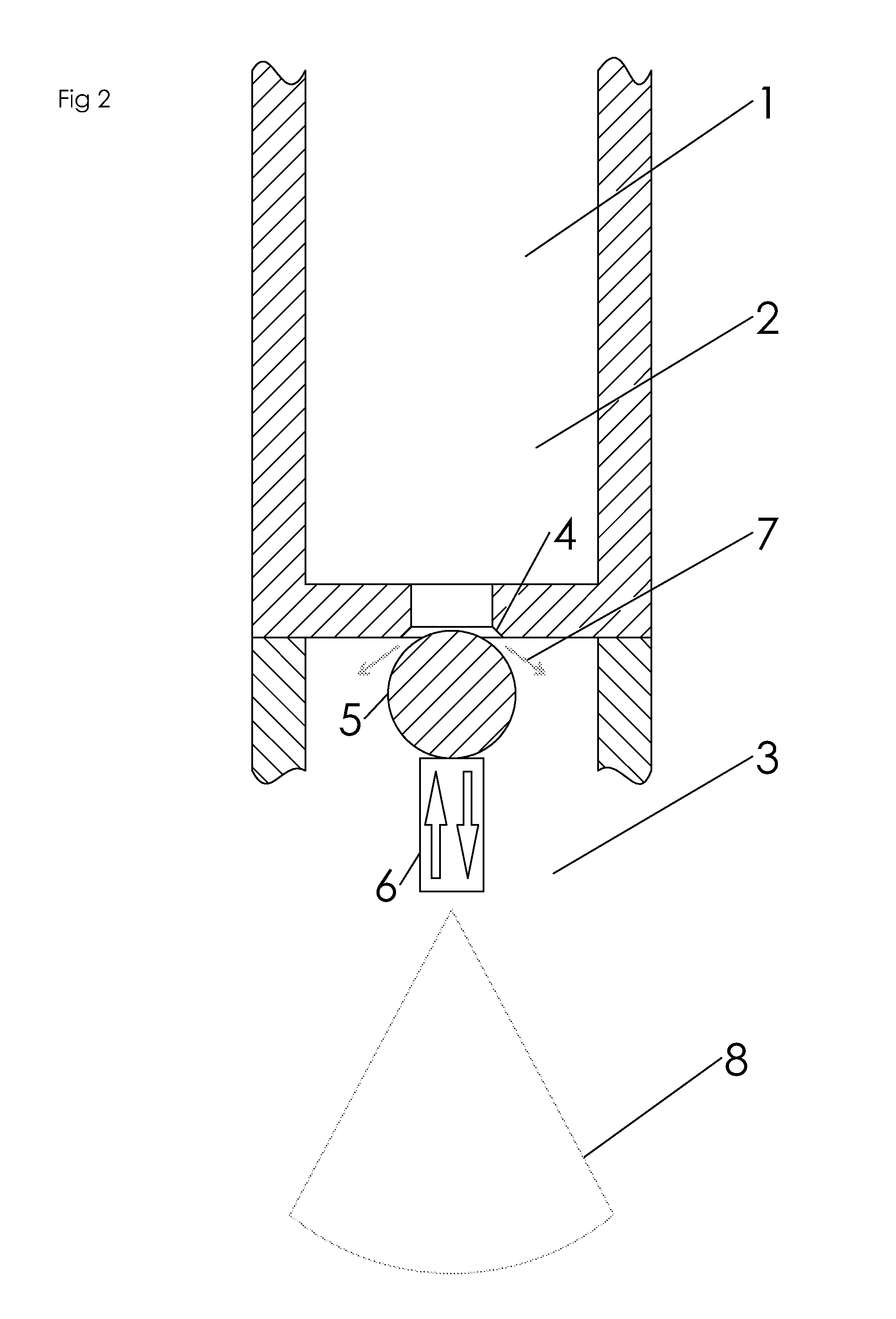Electronically-controlled, high pressure flow control valve and method of use
a flow control valve, electric control technology, applied in the direction of valves, mechanical equipment, operating means/releasing devices, etc., can solve the problems of limited effective and safe aerosol delivery of pharmaceuticals to the lungs, low flow rate of valves used to control high pressure fluid flow, and inability to accept new drug applications
- Summary
- Abstract
- Description
- Claims
- Application Information
AI Technical Summary
Problems solved by technology
Method used
Image
Examples
example 1
[0138]A valve according to FIG. 5 is constructed and mounted onto an aluminum canister pressure vessel with an internal volume of 12 mL, incorporating a shape memory alloy actuator wire conductively mounted to an electrically-conductive standoff inside the canister, and a gold-plated metal pin as the sealing element seated against an elastomeric seat. The canister is pressurized to about 900 psi with carbon dioxide, and metered releases of carbon dioxide gas are effected by application of sufficient current to the shape memory alloy wire to cause it to contract and pull the pin away from the seat. After each release of pressurized gas from the canister into room pressure, after stopping the application of DC current to the shape memory alloy wire actuator, the pin returns to the closed position against the seat and the flow stops. The process is repeated several times. Finally, after pressurizing the canister with 2.88 g of carbon dioxide and sealing the canister with the aforementi...
example 2
[0139]A valve according to FIG. 11 is constructed so that the metal ball sealing element, 1 mm diameter, is seated into the end of a 1.6 mm outer diameter stainless steel tube into which an internal beveled edge had been cut to facilitate seating of the ball against the tube. The ball is pressed into place with a U-shaped bimetal strip, preloaded with enough tension to hold the ball sealed against the tube when 2000 psi of pressure is applied inside the tube, and 2000 psi is maintained going into the tube with carbon dioxide. When current is passed through the bimetal strip, it bends away from the tube, sufficiently to allow the ball to move away from the tube and allow carbon dioxide to flow out of the tube into room pressure. It is determined that the flow rate is proportional to the amount of electrical current passed though the bimetal strip, and the valve is demonstrated to open and close through dozens of cycles of applying electrical current.
example 3
[0140]A valve according to FIG. 15 is constructed using a 0.4 mm OD tube through which flow is controlled from a region of 900 psi carbon dioxide to room pressure. A thin layer of polyurethane, approximately 0.2 mm thick, is applied to the surface of a 20 mm diameter brass disk on the opposite side from piezoelectric ceramic material conductively attached to the disk, also known as a piezoelectric bender. The disk is mounted perpendicular to the tube with the urethane coating pressed against the end of the tube with sufficient force to seal the tube against flow of the 900 psi carbon dioxide into the room pressure region. Eighty volts DC are applied to the piezoelectric bender, along with 6 kHz oscillating voltage, which bends the disk away from the tube and allows carbon dioxide flow to exit the tube. This actuation is repeatedly tested for 2500 on / off cycles of 0.8 sec on and about 7 sec off, and the valve is found to repeatedly release metered pulses of carbon dioxide gas and the...
PUM
 Login to View More
Login to View More Abstract
Description
Claims
Application Information
 Login to View More
Login to View More - R&D
- Intellectual Property
- Life Sciences
- Materials
- Tech Scout
- Unparalleled Data Quality
- Higher Quality Content
- 60% Fewer Hallucinations
Browse by: Latest US Patents, China's latest patents, Technical Efficacy Thesaurus, Application Domain, Technology Topic, Popular Technical Reports.
© 2025 PatSnap. All rights reserved.Legal|Privacy policy|Modern Slavery Act Transparency Statement|Sitemap|About US| Contact US: help@patsnap.com



